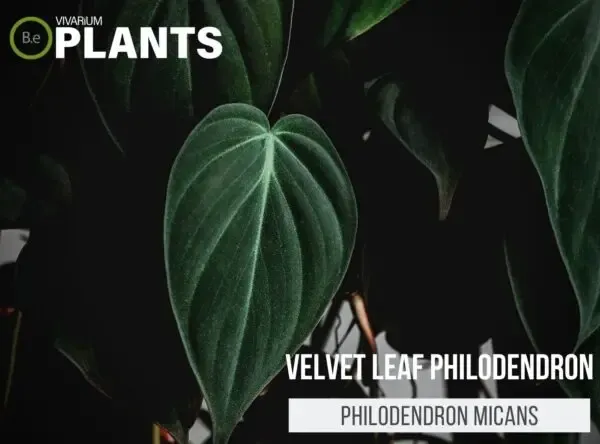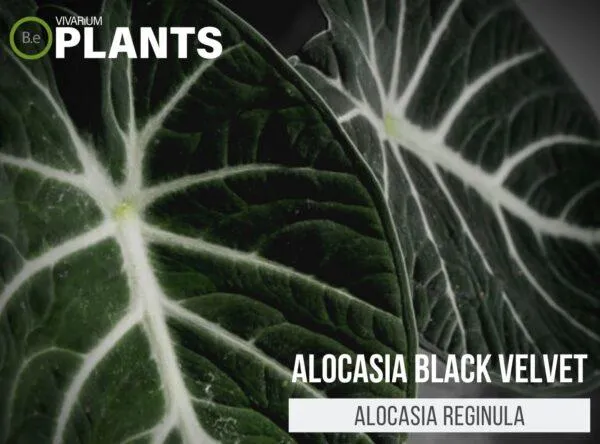Everything You Wanted to Know About Velvet Leaves
If you’ve searched for “velvet leaves”, chances are you’ve come across a plant with soft, fuzzy foliage and have some questions about its care and uses. Well, pull up a chair friend – I’m here to tell you basically everything I know about these velvety wonders.
What Types of Plants Have Velvet Leaves?
There are quite a few species in the plant kingdom blessed with exceptionally soft leaves. Some common ones include:
- Velvet leaf plant (Gynura aurantiaca) – As the name suggests, this tropical perennial is known for its vibrant green leaves that feel like velvet.
- Coleus (Plectranthus scutellarioides) – These colorful herbaceous annuals come in a huge assortment of leaf patterns and hues, including many velvety varieties.
- Michelle’s wonder peach tree (Prunus persica) – The fuzzy peach-like leaves of this ornamental tree certainly live up to its name.
- Peperomia species – Many varieties within this large genus, such as Peperomia obtusifolia, have fuzzy oval leaves that add lovely texture.
So in short, while velvet leaves are found across many plant families, certain species within Acanthaceae, Solanaceae, and Rosaceae tend to show this feature prominently.
Why Do Some Plants Have Velvet Leaves?
The exact evolutionary advantage of velvety foliage remains unclear. But from what botanists can tell, it appears to serve several purposes:
- Protection from insects and pests: The soft hairs make it difficult for insects to walk on leaves, reducing damage.
- Insulation from heat and cold: The tiny hairs trap a layer of humid air around leaves, maintaining a comfortable temperature.
- Reduced water loss: The hairs create a barrier, helping leaves retain moisture for longer during dry spells.
- Camouflage: In some species, the fuzzy coating camouflages leaves, helping them blend into the environment and avoid being eaten.
So in essence, nature endowed certain plants with velvety costumes as a defense mechanism for protection and survival. Pretty clever if you ask me!

Caring for Plants with Velvet Leaves
While velvet foliage brings wonderful aesthetic appeal, it also requires some special care compared to regular leaves. Here are a few tips:
- Be gentle when watering – direct sprays can mat down the hairs. Lightly mist with a spray bottle or water from below.
- Handle leaves carefully while repotting or pruning to avoid bruising the soft hairs.
- Provide adequate humidity and prevent dry air – velvet leaves are prone to damage in very low moisture conditions.
- Increase shade and protection from direct sun – Velvety leaves may sunburn or scorch more easily than regular leaves.
- Remove dust regularly with a soft cloth or brush – Accumulated particles can clog and deform the hairs over time.
- Supplement fertilizer in spring and summer to promote luxurious growth and hairiness.
With a bit of TLC, velvet-leafed plants can thrive indoors for years, brightening any space with their unique tactile qualities. Their care isn’t too hard, you just gotta be more gentle than usual, know what I mean?
Uses of Velvet Leaves
Aesthetics aside, some cultures have utilized velvety foliage for practical purposes throughout history:
- Medicinal: In herbal medicine, certain velvet-leaved plants like Coleus species are employed for their antifungal, anti-inflammatory and pain-relieving properties.
- Textile dye: The soft hairs were harvested and used to naturally dye and texture fabrics like silk and linen for traditional weaving.
- Insulation: The Maori people of New Zealand utilized flax plant leaves for thermal insulation in clothing and housing material.
- Papermaking: The velvety texture imparted a unique finish to handcrafted papers and amate bark paintings from Mexico and Central America.
Though not widely used as such today, I think it’d be awesome to see a resurgence of these novel applications. Imagine velvet-textured apparel or books – pretty neat if you ask me!
Problems with Velvet Leaves
While gorgeous, the fuzzy foliage can also be prone to some issues:

- Pest infestations: Mealybugs, spider mites and aphids have an easier time harboring in the dense hairs, so vigilance is key.
- Powdery mildew: The humid microclimate under the hairs is perfect for this fungal disease to take hold during periods of low air flow.
- Sunscald: Overexposure can burn delicate leaves much faster than regular ones when acclimating to stronger light.
- Physical damage: Bruising during repotting or abrasions from dust/debris are more evident on velvety leaves.
Overall though, plants seem worth the extra fuss for their unique textures. I still remember childhood days spent running my hands over fuzzy leaves – absolutely magical! Kinda makes you grateful for nature’s craft, don’t it?
Growing Velvet Leaves Indoors
For those wanting to experience velvet foliage year-round, several species make wonderful houseplants. Here are some top picks to consider:
- Coleus (Plectranthus spp.) – Come in a kaleidoscope of colors; thrive in medium light and moisture.
- Peperomia obtusifolia – Adds a touch of fuzzy elegance; tolerates lower light and neglect.
- Michelle’s wonder peach tree – Gorgeous ornamental accent tree; grows slowly indoors.
- Copperleaf (Acalypha hispida) – Fiery burgundy leaves; fast growing groundcover or tabletop plant.
- Velvet plant (Gynura aurantiaca) – Lush fountain of vibrant vegetation; keep moist in bright areas.
With proper conditions, you can definitely bring that tactile sensation of velvet leaves into your home. Kinda makes up for not being outside in nature, don’t ya think?
Frequently Asked Questions
Here are answers to some common queries reader’s may have:
- How do I propagate velvet plants? Most can be grown from stem or leaf cuttings in damp soil or water. Coleus also propagate easily through seed sowing.
- Will the soft hairs regenerate if damaged? Typically yes, as long as the leaf tissue remains intact. Give plants ideal growing conditions for optimal hair regrowth.
- Can pet dander or human skin oils harm leaves? No, but best to handle gently. Wipe with a soft cloth if leaves appears dirty or matted.
- What if growth slows down in winter? Less light triggers dormancy; keep barely moist and allow leave to drop. Prune before spring when sprouting resumes.
- Any varieties suitable for outdoor landscaping? Some tropicals like Copperleaf tolerate part shade. Experiment with hardier species like Hosta in protected areas.
Hope this helps satisfy your curiosity about velvet leaves, friend! Let me know if you have any other questions.

In Closing
While their soft epithet implies delicacy, plants with velvet leaves have cleverly evolved to survive and thrive. With some care adapted for their fuzzy foliage, you too can enjoy the unique textures they bring to any space. Next time you come across these wonders, don’t just look – feel the incredible sensory experience for yourself!
Wishing you the best on your plant parenting journey. Until next time, keep those leaves soft and your spirits even softer
Key Facts About Velvet Leaves
| Feature | Details |
|---|---|
| Leaf Texture | Velvety soft, fuzzy or pubescent appearance from dense layers of short hairs on both surfaces |
| Plant Type | Perennial or annual herb |
| Leaf Colour | Shades of green, purple, and red depending on the variety |
| Growing Conditions | Prefers moist, well-draining soil and partial shade |
| Medicinal Uses | Antibacterial, anti-inflammatory properties; used topically to soothe skin conditions |
FAQ
-
What are velvet leaves?
Velvet leaves are basically the leaves that grow on a type of plant called the velvet plant. The leaves have a soft, fuzzy texture that feels sort of like velvet fabric, which is how they got their name.
-
Why are velvet leaves fuzzy?
The fuzz on velvet leaves provides some benefits to the plant. For one thing, it helps the plant retain moisture in dry conditions. The fuzz also acts as a sort of insulation, protecting the leaves from extreme heat or cold. Additionally, the fuzz makes the leaves less tasty to insects and other critters that may want to munch on them. So overall, those fuzzy leaves are one way the plant protects itself.
-
What colors do velvet leaves come in?
Velvet leaves can appear in a variety of interesting colors. Some of the more common colors included deep emerald green leaves with hints of burgundy or purple. But you may also find varieties with leaves tinted orange, pink, or red. A few uncommon types may have leaves patterned in striped or spotted designs. So if you like unusual foliage colors, velvet plants can offer some pretty awesome eye candy!

-
How do you care for a plant with velvet leaves?
Caring for a velvet plant is similar to caring for other houseplants. You’ll want to water it when the top inch or so of soil feels dry. Be careful not to overwater, though – too much moisture can cause the fuzzy leaves to yellow and drop off. Place it in medium to bright indirect light. And feed it with a dilute houseplant fertilizer during the growing season in spring and summer. As long as you give it adequated light, humidity, and care, the velvet plant’s leaves should stay looking super soft and plush.
Now you may be wondering, is it worth it to grow a plant just for its fuzzy leaves? After all, they do require some special care. But the velvet plant’s unusual texture and array of colors can really liven up a home or office space. Plus, its low maintenance needs make it a great choice for beginner plant parents. So in the end, having a plant with amazingly soft velvet leaves seems pretty neat – and definitely makes for an intriguing conversation piece!
